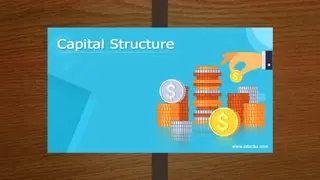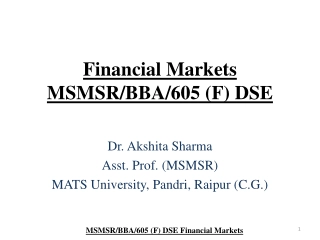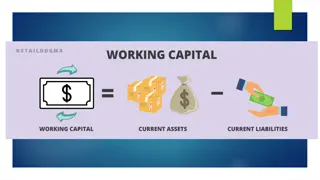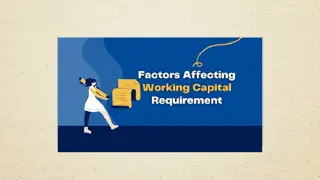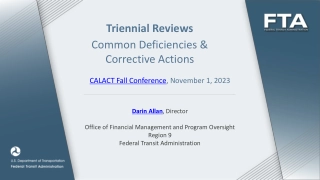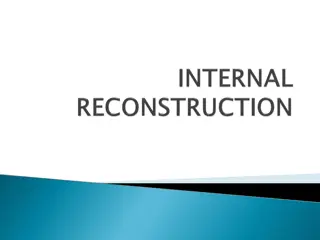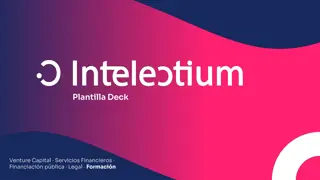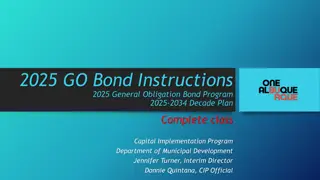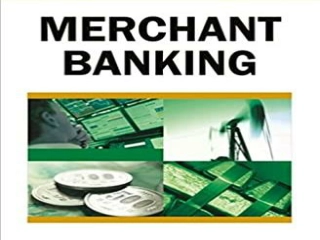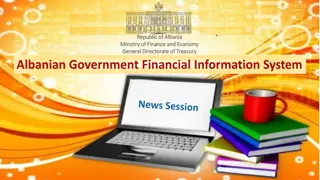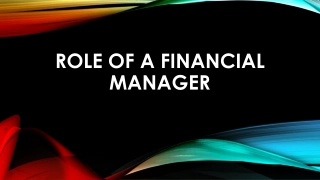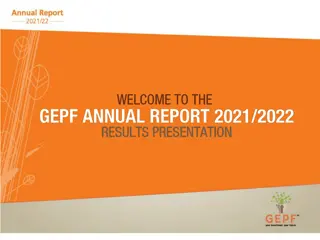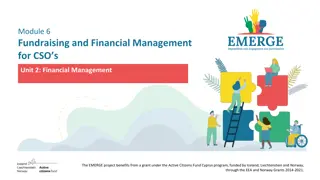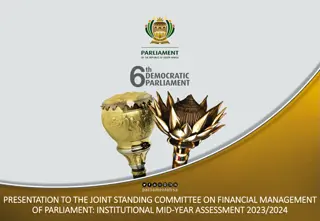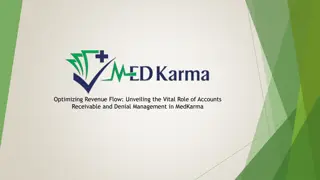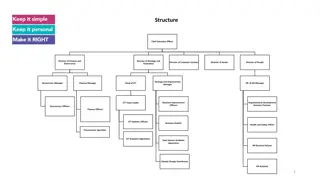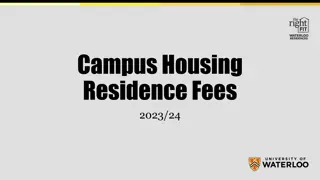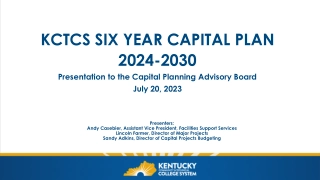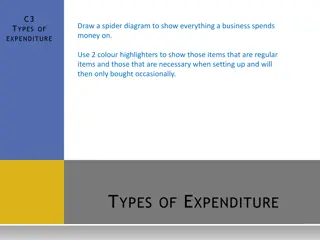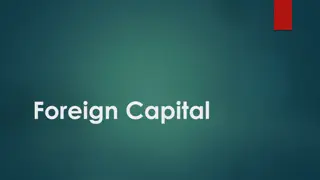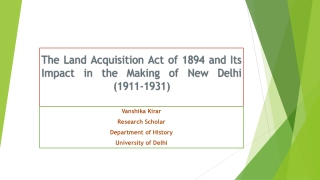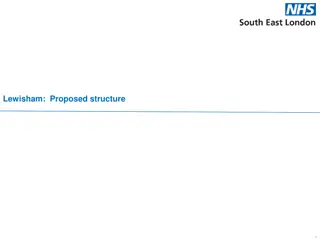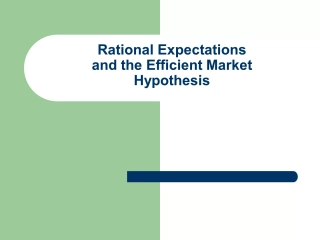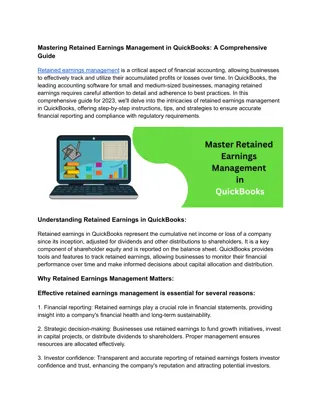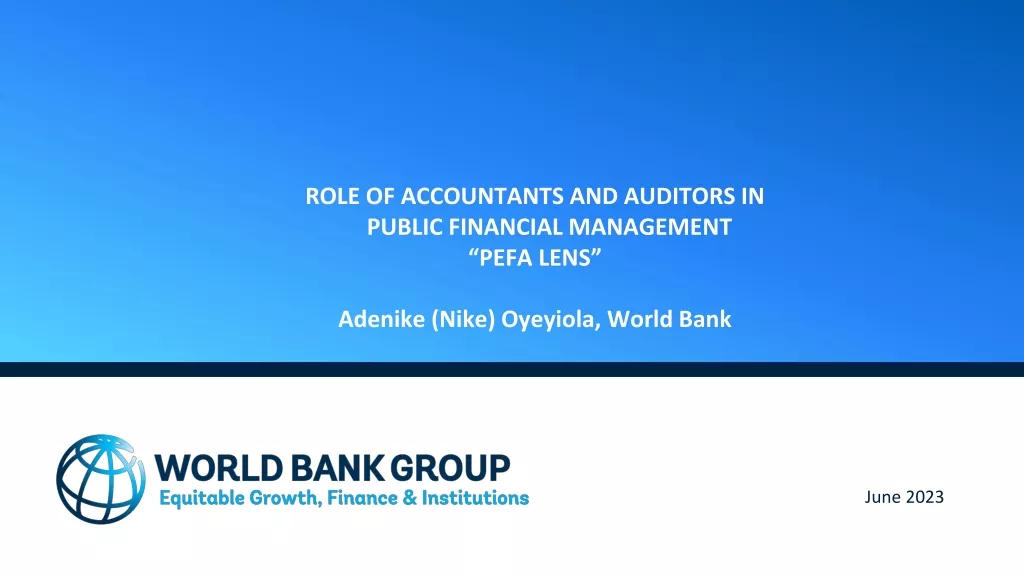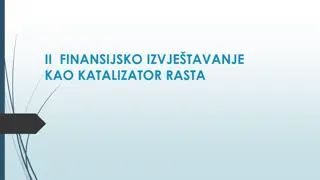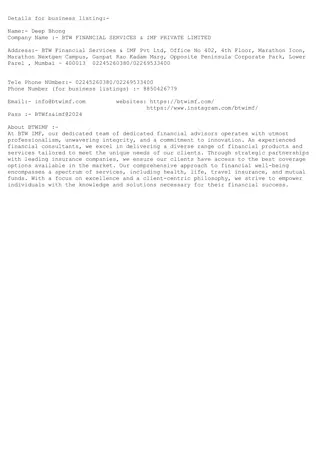Financial Capital Structure Management and Payouts
Discussing various issues and changes in capital structure in corporate finance, including payouts, financial policies, and raising capital through bonds, shares, and equity offerings. Explores the impact of market imperfections on financial decisions and optimal capital structures for maximizing value.
Financial Capital Structure Management and Payouts
PowerPoint presentation about 'Financial Capital Structure Management and Payouts'. This presentation describes the topic on Discussing various issues and changes in capital structure in corporate finance, including payouts, financial policies, and raising capital through bonds, shares, and equity offerings. Explores the impact of market imperfections on financial decisions and optimal capital structures for maximizing value.. Download this presentation absolutely free.
Presentation Transcript
CORPORATE FINANCE FOR LONG-TERM VALUE Chapter 16: Issues and payouts changes in capital structure
Part 5: Corporate financial policies Chapter 16: Issues and payouts changes in capital structure
The BIG Picture 3 Issues raise cash from providers of capital and payouts pay cash to providers of capital Discussion Issues and payouts are only value relevant in imperfect markets Financial payout ratio is payout (dividends + share buybacks) as percentage of profit Impact of E and S on financial issues and payouts is most obvious through their impact on risk, debt capacity and cash flows Integrated payout ratio calculates payout as percentage of integrated value flows Caution on payouts in the presence of significant liabilities on E or S
Issues of financial capital 4 When companies need extra capital, they might issue additional capital: Bonds debt Shares equity The initial public offering (IPO) is a company s first equity issue in public equity markets Subsequent equity issues are called seasoned equity offerings (SEOs) A rights issue invites existing shareholders to purchase additional new shares in the company
Issues in perfect capital markets 5 If a company with 5 million shares raises 10 Market value balance sheet before equity issue million in equity: F assets 25 F debt 5 F equity 20 Assets and cash increase by 10 million Total assets 25 Total liabilities 25 The stock price remains the same Market value balance sheet after equity issue 20 / 5 = 4 value per share before issue F assets 35 F debt 5 30 / 4 = 7.5 million outstanding shares F equity 30 after issue (so 2.5 million shares issued) Total assets 35 Total liabilities 35 Leverage (debt / equity) decreases From 0.20 (= 5 / 25) to 0.14 (= 5 / 35) Company reduces risk
Cost of issues due to market imperfections 6 Due to the tax deductibility of interest, WACC adding debt might increase FV until bankruptcy costs outweigh tax benefits Ru Minimal WACC Optimal capital structure is where the weighted average cost of capital (WACC) is lowest D/V Move to the right: adding debt, reducing equity adds F value Move to the left: adding equity, reducing debt adds F value
Cost of issues due to market imperfections 7 Market value balance sheet before announcement Assume that information asymmetries F assets 25 F debt 5 result in a -3% stock price reaction at F equity 20 Total assets 25 Total liabilities 25 announcement of the issue: Market value balance sheet after announcement Equity (and assets) decreases by 0.6 (= 3% x 20) F assets 24.4 F debt 5 -0.6 Share price drops to 3.88 (= 19.4 / 5) F equity 19.4 -0.6 Total assets 24.4 Total liabilities 24.4 To raise 10 million in equity: Market value balance sheet after equity issue The company will need to issue more shares: F assets 34.4 F debt 5 10 / 3.88 = 2.577 million shares F equity 29.4 Total assets 34.4 Total liabilities 34.4
Why do companies issue capital? 8 Two main reasons why companies issue equity or debt despite the costs: In need of cash for investments with NPV > negative APV (adjusted present value) of issue 1. Owners of privately-owned company may want to (partially) exit APV includes funding costs of transaction 2. Additional long-term factors for issuing equity: Reduce leverage Improve liquidity of shares Enhance company image and publicity Motivate employees and management Explore mispricing Disadvantages for issuing equity High cost of issues Loss of control and ownership
Internal errors in issuing capital 9 The adjusted present value (APV) method judges the attractiveness of an issue Internal errors: managers overestimate cash flows and/or underestimate risk 20% overvalued by management 10% undervalued by management APV components 300 300 plus: cash in -360 -270 minus: management's valuation of the shares -15 -15 minus: transaction costs sum: management's perceived APV -75 15 If APV is negative: management feels it is giving away value Positive APV is unlikely This APV calculation doesn t take into consideration positive NPVs for future investments
External errors in issuing capital 10 External errors: market under- or overvalues (groups of ) companies or market indices 20% overvalued by the market 25% undervalued by the market APV components 300 300 plus: cash in minus: management's valuation of the shares minus: transaction costs -250 -400 -15 -15 sum: management's perceived APV 35 -115 Corporate executives time the market Examples: tronics boom in the early 1960s & internet IPOs in the late 1990s
Payouts to financial capital 11 In payouts, companies return capital to the financiers Payouts on equity: dividends & share repurchases / buybacks For investors, payouts are a way to get income from invested funds ??????? ??? ?????? ?????? ????? =
Payouts to financial capital 12 In perfect capital markets, dividend payment = stock price drop Free Cash Flow (FCF) Theory: managers tend to waste FCF on negative NPV projects and overconsumption of perks (i.e., corporate jets) Higher dividends reduce investment in value destructive projects
Dividends 13 Signaling theory: high and rising dividends signal high company quality Lintner (1956) found that companies establish long-run target payout ratios Managers prefer to smooth dividends Reserve earnings from good financial years to pay dividends in bad years Leads to negative perception of dividends cuts, with negative stock price reaction Cash dividends are cash payments to shareholders Repurchases / buybacks: company buys shares from its shareholders
Calculating dividends 15 Company has: F investment projects 760 F debt 112 3 million shares outstanding, with a per F cash 63 F equity 711 share value of 237 (711 million / 3 million) Total assets 823 Total liabilities 823 Dividend policy of 50% payout ratio Most recent FY: profit of 66 million, so 33 Number of shares outstanding, millions 3 million in dividends and 11 per share (= 33 237 Value per share 66 Net profits, millions million / 3 million) 50% Payout ratio Dividend yield of 4.6% (= 11 / 237) 33 Total dividend paid, millions 11 Dividend per share 4.6% Dividend yield
Stock dividend and stock splits 16 Paying dividends with shares not really payout Increase in shares outstanding is corrected by falling share price Stock splits lead to dramatic changes in shares outstanding Undertaken for shares with high price per share Value before the 15:1 stock split Value after the 15:1 stock split 26 26 Stock market value, billions 80 1200 Number of shares, millions 325 21.67 Value per share,
Share repurchases & taxes 17 Two ways to do share repurchases (also known as share buybacks): Open market operations a company buys back shares in the market Tender offers shareholders receive an offer that asks to submit (tender) a portion of their shares Dividends are more heavily taxed than capital gains and repurchases Tax rates differ across shareholders, with some (such as pension funds) being tax-exempt Dividend capture theory: in absence of transaction costs, investors can trade shares so that non-taxed investors receive dividends
Behavioural view on payouts 18 Internal errors: managers may be tempted to pay too-high dividends or do too-big share repurchases due to overestimated earnings and underestimated risk A strong rationale for paying dividends lies in catering to investor needs: Self-control: dividends make people less reliant on self-control with trading shares Mental accounting: segregating overall gain/loss into several components Regret avoidance: people feel more regret over selling too early (cheaply) than not reinvesting in the same stock
E and S issues and payouts of financial capital 19 E and S affect factors (such as risk, debt capacity and cash flows) that influence whether companies will do payouts or new issues The sudden internalisation of costs could lead to issues and payouts Example: Bayer made dividend cuts in 2021 after litigation on E issues (Monsanto) Internalisation over time Rising carbon tax invest in new technologies reduce FCF lower dividends
Example of E and S effect on dividend policy 20 Option 1: continue to pay dividends 2022 140 20 -25 135 2023 -45 20 -86 -111 2024 -58 22 -94 -130 2025 -33 22 -67 -78 2026 76 22 -23 75 2027 187 22 -23 186 Cash position without dividend cut Net profit Depreciation Capex FCF Cash position with dividend cut 300 Dividend (fixed) Payout ratio 60 43% 60 60 60 60 79% 60 32% 200 -133% -103% -182% 100 $ millions Cash position without dividend cut 247 76 -114 -252 -237 -111 0 2022 2023 2024 2025 2026 2027 Option 2: cut dividends until cash and FCF turns -100 2022 140 20 -25 135 2023 -45 20 -86 -111 2024 -58 22 -94 -130 2025 -33 22 -67 -78 2026 76 22 -23 75 2027 187 22 -23 186 -200 positive: Net profit Depreciation Capex FCF -300 Dividend (fixed) Payout ratio 60 43% 0 0 0 0 60 32% 0% 0% 0% 0% Cash position with dividend cut 247 136 6 -72 3 129
E and S issues and payouts of financial capital 21 Value destruction on E and S puts future cash flows at risk This should make payouts less likely for ethical managers However, a short-term minded manager will likely opt for payouts to milk the cash A positive contribution to E and S creates value, which strengthens capital structure Example: Novozymes a Danish bioenergy provider Expected positive E flows Positive effect on financial position (due to increased demand for low carbon fuels) Could lead to increased dividend payouts in the future
Issues and payouts for social (S) and natural (E) capital 22 The value of assets, equity and liabilities on E and S change over time Unclear whether changes take the form of payouts or issues Difference between F and S and/or E: cash on F balance sheet NPV of projects F Debt Cash F Equity Assets Liabilities & equity
Integrated view on payouts 23 ??????? ??? ?????? ??????? ?????? ????? = ?????????? ?????? ????? = ??? ?????????? ?????? Net integrated income is derived from the integrated profit & loss account (IP&L) Positive Negative Net Payouts 1 -12 -11 E value flows 9 -2 7 S value flows 6 0 6 F value flows 4 Payout 67% (= 4 / 6) Financial payout ratio Financial perspective: payout is reasonable 16 -14 2 Net integrated flows 4 Payout 200% (= 4 / 2) Integrated perspective: payout is excessive Integrated payout ratio
E and S issues and payouts of financial capital 24 In case of high integrated payout ratio (>100%), cutting dividends could allow for more investment to fix negative E and S flows Ang and Lambooy (2022) propose an integrated payout test: Let payout policy depend on social and natural capital, on top of financial capital Test based on financial, social and environmental metrics Auditing rules already require companies to take provisions when they are aware of contingent social or environmental liabilities
Company cases 25 Inditex Novozymes Flows in billions Flows in billions 3.25 4.10 -2.88 -3.73 0.74 2.19 0.40 1.16 1.56 0.21 (1) Net profit (2) Net positive social flows (3) Net negative social flows (4) Net negative environmental flows (5) Net integrated flows (= sum 1 to 4) (6) Dividend (1) Net profit (2) Net environmental flows (3) Net integrated flows (= 1 + 2) (4) Dividend 67% 296% 53% 13% (7) Financial payout ratio (= 6 / 1) (8) Integrated payout ratio (= 6 / 5) (5) Financial payout ratio (= 4 / 1) (6) Integrated payout ratio (= 4 / 3)
Conclusions 26 Issues raise cash from providers of capital and payouts pay cash to providers of capital Issues and payouts are only value relevant in imperfect markets The impact of E and S on financial issues and payouts is most obvious through their impact on risk, debt capacity and cash flows The integrated payout ratio calculates payouts as percentage of integrated value flows Caution on payouts in the presence of significant liabilities on E or S


